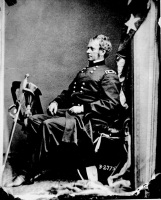The Treasurer’s House
The Treasurer’s House was the seat of the treasurers of York Minister from the 12th century to 1546. The last treasurer – William Cliffe – resigned, after all the treasure was removed during the dissolution of the monasteries. The house was extensively rebuilt in the 17th century.
![Michael Wilson from York, United Kingdom [CC BY 2.0 (https://creativecommons.org/licenses/by/2.0)], via Wikimedia Commons](http://www.mysteriousbritain.co.uk/wp/wp-content/uploads/2018/11/450px-Treasurers_House-225x300.jpg) In 1953 Harry Martindale, aged 18 at the time of the sighting, was working on a ladder in the cellars of the treasurers house, when he heard what he took to be the sound of a trumpet, and saw a soldiers helmet coming through the wall, followed by at least twenty troops. The soldiers were carrying round shields, lances, short swords and looked tired and dirty. The vision was as clear as day, but even more unusual was that the troops lower legs were not visible, as though they were marching on a road much lower than the present ground level. Later excavations revealed the remains of a Roman Road 18 inches below the surface of the cellar, the round shields of the troops is unusual as roman soldiers are usually depicted with the rectangular curved Scutum used by legionnaires, however, round shields were used by auxiliary troops in the 4th century. There were other sightings of similar phenomena in the 1920’s and late 50s.
In 1953 Harry Martindale, aged 18 at the time of the sighting, was working on a ladder in the cellars of the treasurers house, when he heard what he took to be the sound of a trumpet, and saw a soldiers helmet coming through the wall, followed by at least twenty troops. The soldiers were carrying round shields, lances, short swords and looked tired and dirty. The vision was as clear as day, but even more unusual was that the troops lower legs were not visible, as though they were marching on a road much lower than the present ground level. Later excavations revealed the remains of a Roman Road 18 inches below the surface of the cellar, the round shields of the troops is unusual as roman soldiers are usually depicted with the rectangular curved Scutum used by legionnaires, however, round shields were used by auxiliary troops in the 4th century. There were other sightings of similar phenomena in the 1920’s and late 50s.




Re: The Treasurer’s House
‘A History of the County of York: the City of York’ (1961) by P.M. Tillott
The Treasurer’s House and Gray’s Court
The house known since the 16th century as the Treasurer’s House stands on the site of, and in part embraces, a house that in the mid-15th century and possibly as early as 1419 belonged to and was perhaps occupied by the treasurer of the minster. Some 13th-century pillars, now supporting the gallery in Gray’s Court, survive from the medieval house. The treasurership was resigned to the Crown in 1547. The property of the treasurers was granted to Protector Somerset who immediately sold the ‘mansion house of the treasurers’ to Archbishop Holgate. It was still in Holgate’s possession at his death in 1555 and was assigned by agreement with the executors to his nephew Robert Holgate. Some time later it was sold to Archbishop Young.
It is probable that Young bought the house to replace the archbishop’s palace which he had partly demolished. The house passed to his son George on his marriage in 1588 and was still held by him on his death in 1620. Sir George probably built the present Treasurer’s House on an H plan about 1600; the gallery over the 13th-century hall in what is now Gray’s Court was also probably his work.
The house remained in the hands of the Youngs until 1648 when it was sold to Sir William Belt (Recorder 1625-38); Belt sold it to Sir Thomas Fairfax, and Fairfax, in 1663, to George Aislaby of York. From the Aislabys it came into the hands of Robert Squire who, according to Drake, rebuilt it; Squire may have added the distinctive Flemish gables but otherwise his alterations were confined to windows and decoration.
In 1720 Squire’s daughter, Jane, split the house up and let it to tenants and it was later sold in two parts. The northern wing, Gray’s Court, came into the hands of William Gray in 1788; it was divided in the 19th century but brought into one house by Edwin Gray in 1900. Gray’s Court and its gardens were purchased by the chapter in 1945 and it was subsequently let out; in 1959 it was occupied principally by a department of St. John’s College.
The larger part of the house, now known as the Treasurer’s House, was similarly subdivided; the parts were purchased by Francis William Green, a Wakefield engineer, between 1897 and 1900. Green extensively restored the house and filled it with a collection of antique furniture. In 1930 he presented the house and its contents to the National Trust, who held the property in 1959. It was from the Treasurer’s House that, between 1782 and 1786, John Goodricke, the astronomer, made his observations.